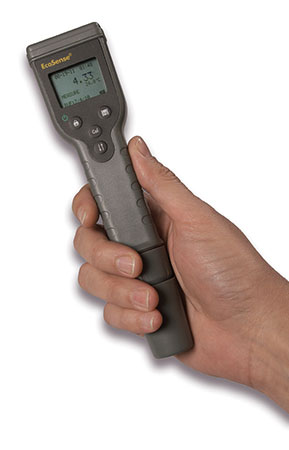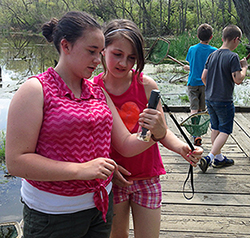Stream and Pond Study with the Biotic Index
Although students in a science classroom might be familiar with key water quality parameters, it is likely they have no hands-on experience with the tools used to measure them. It is easy to read about these parameters in textbooks, but allowing students to be more engaged in the learning process allows them to develop a deeper understanding of parameters and why they are measured.
Challenges
Water quality instruments can be expensive. Robust, multi-parameter data collection platforms that are designed to be left in the field for months feature a price point that is unrealistic for many school budgets and outdoor education programs.
Solution to Equipment Challenges
YSI has answered the need for economical instrumentation for the education setting with the EcoSense® product line. This product line includes small instruments (i.e. ‘pens’) for the measurement of pH, ORP, and conductivity, as well as larger handheld instruments with replaceable cables for the measurement of pH, conductivity, and dissolved oxygen. These instruments are designed for quick and accurate results.
Outdoor Education
Five Rivers MetroParks (FRMP) is a regional park district that owns and manages 19 parks, 11 conservation areas, and 7 bikeways that encompass nearly 16,000 acres in the Dayton, Ohio region.
A major initiative for FRMP is to actively engage the community in conservation efforts. One way FRMP is accomplishing this goal is to educate children of all ages through hands-on outdoor education programs.
“Hands-on learning is the best way to help kids of any age connect to nature. Nothing comes close to the power of hands-on discovery and exploration to help kids make connections, and help them understand what they are asked to learn about” said Lauren Stayer Asquith, Education Specialist with FRMP.
During the summer of 2015, Lauren conducted a series of programs for 11 to 14-year-old students designed to introduce them to methods of assessing the health of local streams. She said, “during these programs, students were investigating the stream for aquatic organisms while having discussions about water quality.“

In order to evaluate stream health, Lauren used the YSI pH10A pen for her programs. “We used them in conjunction with the biotic index, so students were confirming what they were finding with the pH instruments and the organisms in the water. This sparked discussions about what might impact the pH of the water, which would impact the organisms they find and what might impact the cleanliness of the water.”
Lauren’s students were able to determine the pH of a local pond was 8.2, while the pH of the Stillwater River was 8.5. Lauren noted that these pH measurements were “within an acceptable range for many of the aquatic insects, snails, mussels, and fish.
Having a pH instrument helped students to quantify the quality of the water as it relates to the aquatic organisms they were finding using nets and turning over rocks.”
Keeping older children engaged can be difficult, but Lauren found it easy to keep their attention when instrumentation was used. “Younger children just need to get wet and catch creatures, but older kids are looking for something more. Technology is huge with kids, and many would rather play a computer game than go outside. Showing kids that technology and nature can go together is powerful.”
Lauren was impressed with the operation and durability of the pH10A pen, features that are incredibly important when working with kids. “The pH pens were very easy to use. Students found them intuitive and enjoyed using them. They are sturdy, which helps teachers feel comfortable allowing students to use them” she said.
The pH pens will be used in FRMP outdoor education programs for years to come, and they will continue to help educate students about the importance of water quality. Students investigating the health of local streams use a YSI EcoSense pH10A pen during an outdoor education program with Five Rivers MetroParks.

Additional Blog Posts of Interest
Future Science Teachers Find Joy in New Water Quality Tools
A Practical Guide to pH Measurements | The YSI pH Handbook
Why is the pH Scale Logarithmic?
pH Measurement Methods - Advantages and Disadvantages